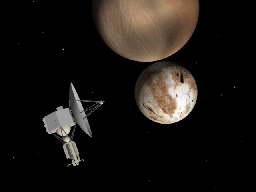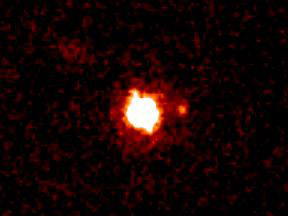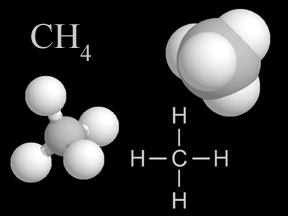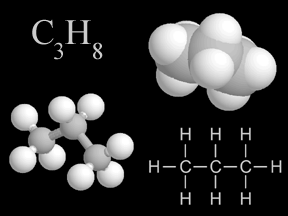Click on image for full size
Images courtesy of NASA, ESA, JPL, and A. Feild (STScI).
Makemake: a Dwarf Planet
Makemake is a dwarf planet in our Solar System. Makemake was discovered in March 2005 by a team of astronomers led by Mike Brown. Makemake officially became a dwarf planet in July 2008.
There were three other dwarf planets before Makemake. They are Pluto, Ceres, and Eris. Makemake is a large Kuiper Belt Object (KBO). It is an icy world that orbits far from the Sun on the edge of our Solar System. Pluto and Eris are KBOs too. Because it is so far away, Makemake takes nearly 310 years to orbit the Sun once! Makemake is usually a bit further from the Sun than Pluto.
Makemake is named after a god of the Rapa Nui people of Easter Island (the place with the cool statues). Makemake is the god of fertility and the creator of humans in Rapa Nui mythology. Makemake was discovered soon after Easter in 2005. The astronomers nicknamed it "Easterbunny". When they chose an official name, they decided they should use a character from the mythology of Easter Island.
Makemake is smaller than both Pluto and Eris. Its diameter is between 1,300 and 1,900 km (808 to 1,181 miles). That makes it about three-fourths the size of Pluto. Astronomers haven't found any moons circling Makemake yet. That is a bit odd, because other large KBOs (including Pluto and Eris) do have one or more moons.
Makemake is very, very cold. The temperature there is about minus 240° C (-406° F)! Makemake may be covered with ice. That ice would probably be made of methane and maybe ethane. The surface of Makemake is very bright, which you would expect of ice. It is also a bit red in color, which you might not expect!
Makemake may have an atmosphere... at least some of the time! When the dwarf planet is closer to the Sun in its orbit, it probably warms up some. Maybe the methane and ethane are gases then, and form an atmosphere. When Makemake is further from the Sun in its orbit, it should be colder. Maybe the gases freeze then, and fall to the ground as snow... and the atmosphere is gone! Scientists don't know if this happens, but it might. The same thing may happen on Pluto, too.















